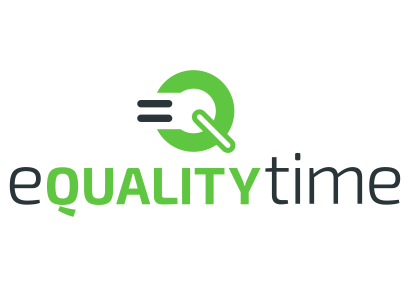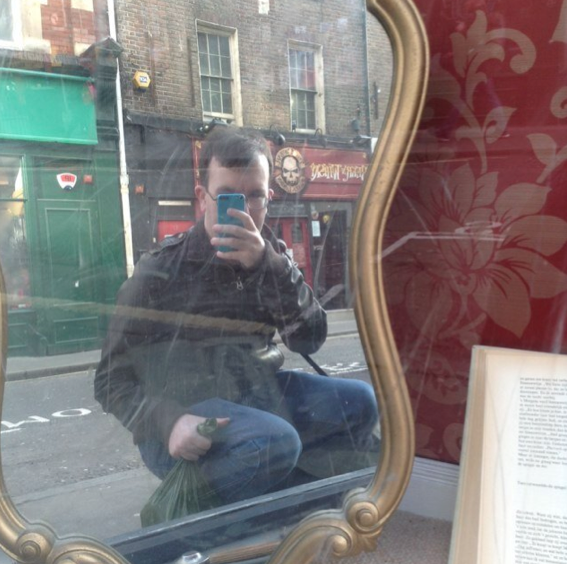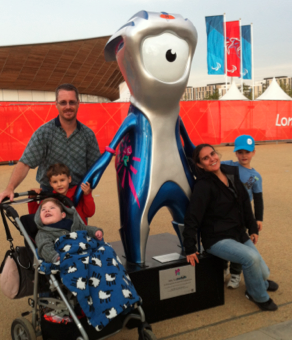
Following on from interviews we did recently with Paraclimbing World Champion Fran Brown, disability sex champion Tuppy Owens, and especially, AssistiveWare CEO, David Niemeijer, we now present Ian Thompson, Managing Director of Liberator.
Liberator have long been a stalwart of the AAC world. According to their website they produce communication aids that:
“support a wide range of language solutions including Unity, WordPower and text-based systems, are highly flexible, easy to program and backed by unrivalled warranty and support packages.”
…and I can say that my experience with their warranty has been very satisfactory. More relevantly, according to the Domesday Dataset, Liberator account for more dedicated dynamic display AAC devices than any other company, and that makes them important to people who are important to me…
(If you are interested in other AAC-related articles on the blog, it’s worth looking at the listing here)
Me: From the Domesday Dataset, it is clear that Liberator devices lead the market in terms of dedicated touchscreen AAC devices, despite massive recent market upheaval – do you credit this to having a loyal community of users or to having a technological edge over some of the other large manufacturers?
Ian: Our Mission is to help people with disabilities achieve their potential through independent and spontaneous communication. This focus on the communication ability delivered by our Communication Aids is a significant reason why our solutions have been so successful for many thousands of clients all over the World. Outcomes and effectiveness is the key focus for us and we take great pride in seeing the success an effective language system like Unity (Minspeak) can deliver for people of all ages and abilities. I believe we continue to thrive simply because our clients continue to achieve remarkable improvements in their communication. Clinical professionals and parents both have loyalty to their clients or children, not to a company or software. We have always held a client-centred view of AAC. We succeed because our clients succeed.
As a business we are used to seeing change in the industry. Our parent company, Prentke Romich Company (PRC), has been operating for over 45 years and were true pioneers in the industry. Liberator was established in the UK over 23 years ago as the international arm of PRC. We support clients in many different countries and languages and have subsidiary companies in Germany and Australia. We have seen much change over the years globally due to the differing stages of AAC development, support, technology and funding. However, the constant for us throughout this time has been our language solution. Our focus on solutions that enable effective and independent communication has undoubtedly put us in a better position than being merely technology focussed. We provide the most researched and widely implemented language system in the field of AAC.
Of course technology is a very important element of what we provide. Our number one objective is reliability. We always strive to create devices that will achieve maximum reliability for our clients so they can keep on communicating. However, we also recognise that design and cosmetics are vitally important in today’s World as the iPad has significantly raised the benchmark in terms of desirable hardware.
Getting the balance between creating a robust device with appropriate battery life, necessary amplification / accessory interfaces and a device that has the right aesthetics has certainly become a bigger challenge for manufacturers in recent years. But I should emphasise that technology is only one component of successful communication and probably gets too much attention. Even consumer companies such as Apple or Samsung can’t sustain technology advantages for very long. Most consumer solutions require extensive accessories to be adapted for communication. Our focus is on technology that works for our clients. That includes being reliable through the daily use and the years that can go on between funding opportunities. The consumer solution market isn’t yet old enough to be able to estimate the long term reliability of those solutions.
Me: The more established AAC can claim advantages to tablet based solutions in terms of touchscreen responsiveness, robustness or speaker volume. However, such things come at a price – has there been pressure to compromise on the hardware quality in order to lower prices?
Ian: Price is a key consideration in any AAC purchasing decision and understandably so when the NHS is required to deliver significant cost savings. However, I think we have not done a very good job as an industry in steering an understanding of the cost savings effective AAC can deliver. Our experience over our long history is that many clients that become competent AAC users require less carer support, are included more in society and some will go on to further education and meaningful employment.
So whilst I would prefer to hear more discussion about the benefits of AAC, the positive impact on people’s lives and the financial savings it can generate, we do of course have to be mindful of purchasing pressures. Compromising on quality within our product development would be disastrous for our clients and also bad business for us. We are committed to supporting our devices for years and ensure they are all tested and meet the Medical Devices standards.
AAC companies have always taken the components of the consumer electronics industry and re-designed/re-purposed those components to create effective AAC solutions. In some ways, tablet computers are just the next generation of that adaptation. We have managed to control prices whilst maintaining quality through different manufacturing processes. As an example our latest device maintains the same level of quality and compliance to standards as well as being much sleeker than the outgoing model, yet is 40% cheaper. This has been possible due to new technology, but also driven by the requirements of the market forcing a much greater and welcome focus on innovation.
Me: App-based AAC companies can point to their ability to quickly release improvements to your users by changing the version on the app store and asking them to update. Do you guys ever feel limited by the nature of your platform?
Ian: I think there are pros and cons of this ability. The majority of our clients and those that support them do not want and cannot easily cope with constantly changing features. Imagine needing to re-learn how to spell words or create sentences on your computer every 6 months. Our language solutions are designed to minimize re-learning as the client’s vocabulary grows. The ability to migrate language solutions across our product range and onto next generation devices drives a need for familiarity and consistency in software versions. These are communication solutions for clients to last a lifetime.
Minimising the need to update is key, but we do have the ability to remotely update our software in addition to the usual internet download or USB stick updates. Our AAC Consultants are also in regular contact with clients and centres and will perform updates for clients as required.
Me: The effects of the entry of tablet based solutions appear to be levelling off over the last couple of years, but there are always big things around the corner – how do you think the AAC market will change over the next five years?
Ian: A very good question but very difficult to answer especially when you consider what has happened over the last 5 years!
Everyone who works with clients with communication disabilities understands that no single event, the delivery of a device or the downloading of an app, serves as a ‘cure’ for those communications challenges. AAC is a practice, not a product. Our clients’ disabilities are usually chronic. Non-verbal children with autism or cerebral palsy need years to learn language through AAC technology. That success depends both on delivering the right solutions for those children but also the ongoing support, teaching, training and encouragement. Even those adults who acquire a communication-related disability later in life typically have those issues for the remainder of their lives. Adults with degenerative conditions often require updates to their AAC solutions, access methods, etc. to be able to continue to communicate effectively. I hope we devote more attention to the language solutions, the training, the implementation support that these individuals need.
Our ‘wish’ is that everyone recognises the entire stream of events that are needed to enable someone to communicate to their full potential and that as a society we recognise both the human obligation to provide those services and the economic value of enabling people to guide their own medical care, go to school and participate in the work force. Those of us who work in the field every day see how life-changing this can be. As an industry as I’ve previously mentioned, I don’t think we’ve done a good job in making the case for the long-term economic value of people who can communicate independently.
I hope that future innovation is driven by the value delivered to the client. Better technology has always been and will always be one part of that equation. We need to measure the value of innovation through the lives of our clients. The capabilities around remote training and support for example, might have more impact on the quality of outcomes in the future than another generation of consumer technology.
Me: I was disappointed not to see Liberator at the Communication Matters conference this year – can you tell me some of the reasons behind that?
Ian: As everyone knows the past few years have been difficult for the AAC industry in the UK. The issues of consistent and reasonable funding have been discouraging for clients, families and the professional community. We are always looking for new ways to reach the AAC community and we’re going to continue to look beyond the traditional venues to get more people interested in and knowledgeable about AAC.
In 2013 we launched the Liberator AAC Awareness days and ran 8 of these free to attend events across the country. These are one day workshops that include a wide range of subjects from low-tech to high-tech and clinical aspects like implementing AAC in the classroom. Guest speakers are involved particularly for topics like the highly successful LAMP programme (Language Acquisition through Motor Planning) run by the Centre for AAC and Autism UK.
So 2013 was a very busy year with these new events in addition to other exhibitions and CM Roadshows. Unfortunately the CM Conference was one event we just couldn’t accommodate last year. We will continue to run AAC Awareness days as they have been extremely successful, but the CM Conference is also in our plans this year so I hope to see you there!

























